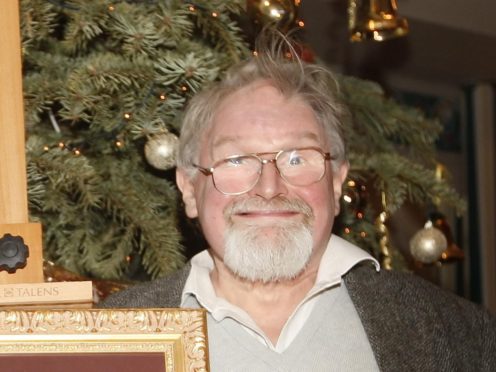Described by some as the nearest Scotland had to a Leonardo da Vinci, Alasdair Gray was a creative polymath whose work spanned the arts.
Born on December 28, 1934, in the Riddrie area of Glasgow, to Alexander and Amy, Gray was evacuated to a farm in Auchterarder, Perth and Kinross, during the Second World War along with his mother and younger sister, and then to Stonehouse in Lanarkshire.
From 1942 to 1945 the family lived in Yorkshire, where his father was working, before they returned to Glasgow where the young Gray attended Whitehill Secondary School, receiving prizes for art and English.
He attended Glasgow School of Art from 1952-57, studying design and mural painting, and went on to make his living from writing, painting and teaching.

It was in the 1950s that he began writing what would become the novel Lanark, which was published in 1981 to great critical acclaim, winning a Scottish Arts Council book award and the Scottish Book of the Year award.
Hailed as a modern classic and mixing fantasy, autobiography and social realism, it tells the interwoven stories of Lanark and Duncan Thaw, and is set in the cities of Glasgow and Unthank.
He went on to write many more books, several of which he illustrated. His other works of fiction include Janine (1984), Something Leather (1990) and Poor Things (1992), which won the Whitbread Novel Award and the Guardian Fiction Prize.
He was also editor of The Book Of Prefaces, published in 2000, and wrote short stories, poems and plays for radio, television and theatre.
Over the years he also made his name as a painter, creating work closely intertwined with the city which was his home.
He worked as a theatrical scene painter for the Glasgow Pavilion and Citizens theatres in 1962-63.
In 1977 he was Glasgow’s official artist-recorder for the People’s Palace local history museum, painting portraits of contemporaries and streetscapes of the city.
He also painted murals at various locations around the city, including the renowned Ubiquitous Chip restaurant in the west end, Greenhead Church of Scotland in Bridgeton and Belleisle Synagogue in Giffnock, though the latter two buildings have since been demolished.
More recently he painted a huge mural on the ceiling of the Auditorium at the Oran Mor arts and entertainment venue and on the wall of Hillhead Subway station in the city’s west end.
In late 2014 a major retrospective was held at Kelvingrove Art Gallery and Museum in Glasgow to celebrate his 80th year.
More than 15,000 people visited the show, titled Alasdair Gray: From The Personal To The Universal, which brought together more than 100 works spanning his career.
It included some of his best-known paintings such as Cowcaddens (1964) and Night Street Self Portrait (1953).
During the course of his career Gray was also involved in teaching and academia, working as an art teacher, mostly part-time, in Glasgow and Lanarkshire between 1958 and 1962.
He was writer in residence at the University of Glasgow from 1977 to 1979 and held the chair of creative writing jointly with Tom Leonard and James Kelman at the institution from 2001 to 2003.
In 1961 he married Danish nurse Inge Sorenson, with whom he had a son Andrew, born in 1963, however their marriage ended in 1969 and they subsequently divorced.
His second marriage came in 1991 when he wed Morag McAlpine, who died in 2014.
His autobiography, Of Me & Others, was published in 2014.
He was a supporter of Scottish independence, penning Independence: How We Should Rule Ourselves, which was published in June 2014 as Scotland geared up for the independence referendum, while he also decorated the front page of the Sunday Herald the day it declared it was backing a Yes vote in May that year.
In June 2015 he was badly injured in a fall at his home, which affected his mobility, though he later returned to work.
Last month Gray was given a lifetime achievement award by the Saltire Society for his contribution to Scottish literature.
